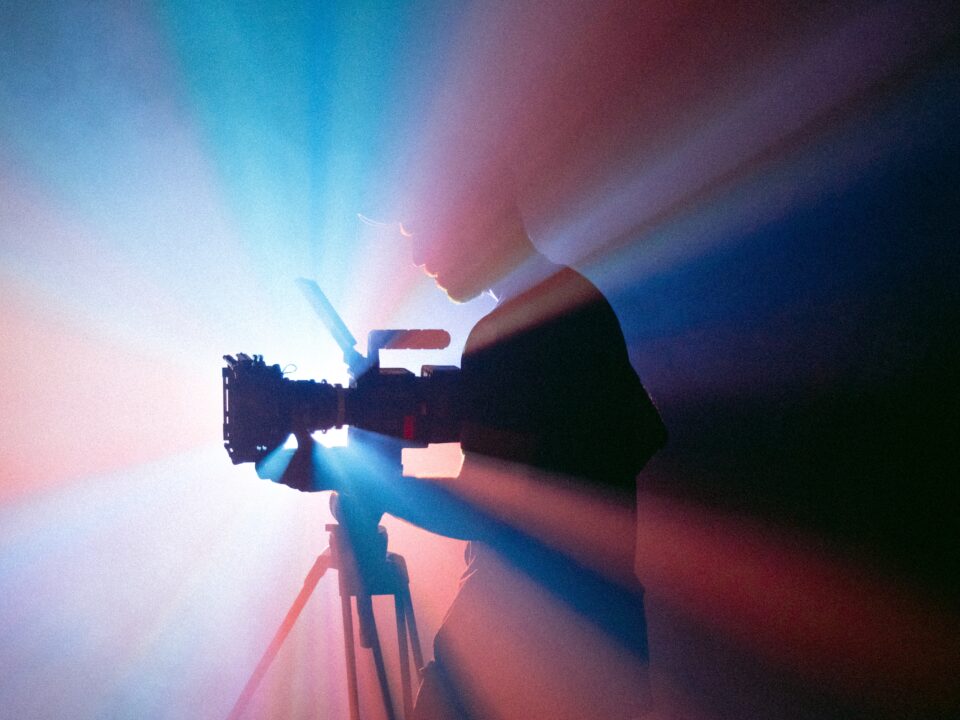

Posted In: Digital by
Ant Kenny,
August 6, 2025

By Ant Kenny – Head of Digital
Bit of a sensationalist title for a blog as brand building didn’t really go anywhere but for a while, it looked like it was slowly being moved out of the picture. Performance is king, everything was about performance, being data lead (which I know can be brand focused too but data lead often means performance), dashboards to boot with real time updates, every pound spent scrutinised yada yada yada.
Brand, in contrast, was harder to pin down, slower to show results, and therefore riskier to invest in, especially when CFOs wanted certainty. However, brand never stopped being critical in this and the industry kinda convinced itself that you can grow without it.
Of course, you can show significant growth without it however often what happens is a bang where you’ve hit that proverbial glass ceiling. And that glass ceiling has never been more noticeable and menacing than it is today.
Let me make one thing clear, I’m not throwing any shade at performance marketing. For starters I head up the digital marketing team here at Boutique, the majority of people we help are steeped in performance marketing. The problem however is that often it has become the default, the strategy, the entire plan.
From around 2010 onwards, many brands chased scale through ever more targeted, transactional activity and naturally so as the emergence of Facebook Ads, Google’s continued dominance, and the rise of programmatic meant that marketers had the tools to reach people more efficiently than ever. You could show an ad, track the click, follow the path to purchase. Spend in, sales out. Who wouldn’t see the value in doing this?
But then this solely became the only model for growth, and over time something got lost. Brand investment slowed and as a result creative took a hit. Short-termism crept into everything from media planning to content strategy and then CMOs were asked to justify spend within quarters, not years and in many cases, marketing became more about pleasing an algorithm rather than building any real connection. And the attitude towards marketing became very sterile, like just cranking a machine. It became boring.
However, let’s be honest, for years, it looked like the numbers backed it up so why would anyone do anything differently. That is until one day it just didn’t work, and this is what I keep seeing is the position where many brands find themselves in today.
There’s been so many signs that might have seemed small but have just compounded over the years. Things like cost-per-clicks rising, organic reach being increasingly bloody hard to get and then you get it you get less clicks, loyalty falling, performance channels getting more and more crowded, expensive, and unpredictable. Brands once hooked on cheap acquisition found themselves stuck in a cycle of constantly topping up funnels that leaked faster than they could fill them.
More recently, economic pressure and shifting privacy regulations have made the cracks impossible to ignore. It’s made attribution messier and efficiency a lot harder to come by.
AI and large language models have only accelerated that trend with content now easier and cheaper to produce than ever, the volume of marketing noise has exploded. And much of it feels the same, well-structured, grammatically sound, technically correct, but largely forgettable. Also, as all performance tools have become driven by machine learning and audience signals, anyone can do it. This means more competition, across more platforms, and even more difficult to stand out. There’s simply too much choice now.
I always likened the sheer volume of advertising to Spotify. In theory, you’ve got millions of songs at your fingertips meaning infinite discovery and almost infinite variety, but if you’re like me you still end up listening to the same few playlists or artists, not because I don’t like new music, but because the sheer volume makes it hard to know what’s worth paying attention to. Choice becomes noise. Think about this for a second. The human brain isn’t wired to process endless options equally but instead we’re built to filter, to ignore what doesn’t stand out, to conserve energy by paying attention only to what feels relevant or familiar. And because of this, in this current landscape, brand isn’t just a nice-to-have anymore, it’s now, more than ever, the thing that cuts through. This means that strong brand signals, distinctive assets, a clear point of view, tone, design, emotion, are all now critical. And this is not just for consumers, but for algorithms too. Whether it’s how your content ranks, how your ads are received, or how people choose what to click, being recognisable and memorable has never mattered more.
I need to be clear here; this isn’t a return to vague mission statements or vanity rebrands. Today’s best brand building is sharp, insight-led, and commercially focused. It’s rooted in audience understanding, cultural relevance, and consistent delivery across every touchpoint. I feel as an industry when we talk about brand people instantly just think “upper funnel” but this is not the case at all as it has a role to play across the whole funnel. Everything you do in marketing is brand building, its not just doing glossy awareness campaigns but sharpening UX and driving content strategy that covers the whole buying journey. Increasingly, it’s embedded into media plans, performance activity, and even CRM.
And the good thing is modern brand building is measurable too…if you know where to look. Metrics like mental availability, share of search, and branded search uplift are becoming smarter proxies for brand strength and with the right modelling, we’re now better at proving how brand investment supports long-term revenue and margin growth.

This whole post is not about pitting brand against performance; it’s always been slightly ridiculous to debate this. The most effective marketing strategies find the right balance between long-term brand building and short-term activation. Studies throughout time keep showing that you need a mix of both, Binet and Field’s well-known work for the IPA shows that the ideal budget split for sustainable growth tends to be around 60/40 in favour of brand (in favour! And yet you hardly ever see brands invest in this way). Of course, this ratio flexes depending on category and maturity, but the principle holds: brand primes the market, performance converts it.
Without brand, performance works harder for less return. Without performance, brand lacks direction. One supports the other and this needs to be factored in
For me, one of the more worrying outcomes of the past decade is that marketing, in many places, has become dull, safe, and predictable. It’s just not as fun, and the best marketing campaigns seem to be brands who already have enough budget and brand equity to throw things out there because they can.
It’s become boring since templates have taken over, best practice has become default practice, everyone’s using the same stock footage, the same paid social formats, the same three hooks to grab attention. In the pursuit of efficiency and optimisation, we’ve stripped out the stuff that makes brands memorable and then case studies plastered all over LinkedIn just creates an echo chamber leading to people doing the same things.
This for me is where brand earns its keep again as strong brand thinking brings a level of differentiation and originality that performance tactics alone can’t deliver. We’re now being forced to ask better questions, to take creative risks, and to make things that feel like them, not just “what works on TikTok right now.”

The return to brand is a shift in mindset as much as method and means thinking beyond the next campaign and building something that will compound over time. It means having the confidence to invest in things that might not show up on this month’s dashboard but will move the needle in the long run.
For agencies, it’s a chance to reframe the conversation. It’s less about channel tactics and more about how we drive meaningful, sustained impact and this might mean reshaping briefs, revisiting brand strategy, or finding smarter ways to measure what brand is really doing.
For clients, it’s a reminder that growth isn’t always linear and to be honest hasn’t been for a while. The strongest brands don’t just sell more, they sell more easily, more often, and with greater resilience.
Brand isn’t a trend that’s back in fashion but rather the foundation that should never have been ignored in the first place.
And while this piece hasn’t been about AI in depth (even though I titled it like it would be), the shift to large language models and agentic AI makes one thing clear: that when people start asking machines for recommendations, those machines will prioritise the brands that are known, talked about, distinct, and trusted and not just who’s bidding the most on a keyword or ranking better.
LLMs won’t favour the loudest but instead they will favour the clearest.
They’ll draw from what’s written, said, and surfaced about you and your brand presence, reputation, relevance and this is what makes brand signals more critical than ever. Tone, consistency, distinctiveness, cultural traction: it’s all being recorded, ranked, and fed into systems people will soon rely on to make decisions for them.
And that’s why I’m thankful for it, because if this shift pulls brand thinking back into the centre of marketing and puts creativity, originality, and relevance back on the table, then maybe we can stop chasing short-term wins and start building something meaningful again.
Marketing might just get to be fun again.
We would love to chew the fat – if you would to get in touch hello@weareboutique.co.uk